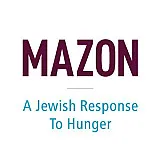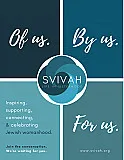The Interfaith-Humanist-Vegan Seder

The Interfaith-Humanist-Vegan Seder: A Mouthful in Many Ways
By Jared David Berezin
When our eyes begin to burn and tear up my wife and I look at each other and laugh. That’s when we know the horseradish is ready. We also bake our own homemade matzah, and the unleavened flat bread resembles pita or injera (Ethiopian bread). Preparing Passover-friendly food from scratch and arranging the seder table is a ritual my wife and I enjoy as much as the seder itself.
For many people, Passover is a journey that begins well before the first cup of wine (or grape juice). Some have been to dozens of seders in the past. Indeed, some of our seder guests may have attended a different seder (or two!) earlier in the week, while others have never been to a seder before. Regardless of a person’s experience or faith, everyone comes to the table with conscious and unconscious expectations, desires and concerns.
Ever since I can remember, Passover has always been my favorite holiday. As a restless kid, I could attend the Passover “service” (our family’s seder) without dressing up and going to synagogue, which also meant not having to sit still for an hour. My grandparents would host our family seder, and as they grew older my mother and aunt assumed the responsibility. Our family seders were always quick, predictable and familiar. I loved being surrounded by family, food and singing. As a teenager I’d just bring my guitar; it was always nice being able to simply arrive and have everything already prepared and laid out on the table.
Hosting Our Own Inclusive Seder
In my twenties, I became more curious about Judaism, particularly its intellectual and social justice elements. A few years later I met the love of my life who was raised Christian and has developed a dislike of all organized religion. Amidst my growing curiosity of Judaism and my love for my girlfriend (now my wife), I began to dream of more inclusive and meaningful Jewish moments and celebrations. I wondered what it would be like to host our own seder, one that could be welcoming for our friends of various faiths and (dis)comfort levels when it comes to religious activities.
Initially, I tried to formulate a highly-strategic seder and haggadah that would satisfy the needs of every person who might happen to join us—from Conservative Jews to Buddhists to atheists. I soon realized that although it’s important to be aware of one’s audience, I found myself drowning out my own individual spiritual beliefs and values. The early drafts were too distant from my vision of an inclusive experience; I had to accept that if I wanted to try new things, my guests and I would simply have to wander through the newness together. Fortunately, the story of Passover centers on faith and risk.
When in Doubt, Look About
When I worked in marketing years ago a colleague would often say, “When in doubt, look about.” I searched online and read through all of the haggadot I could find, along with any Passover-related information on InterfaithFamily.com and other websites. I wanted to learn how others approach the holiday, along with any stories and songs that I hadn’t heard before.
I also reached out to several friends to hear about their seder experiences, as well as my dear friend, Rabbi Lev Baesh, a longtime champion of interfaith marriage and inclusiveness, who is a consultant with InterfaithFamily. My wife and I had performed music the year prior at a seder led by Lev. He interpreted the Passover story in many different ways—social, political, economic and psychological—and helped me understand how themes from an ancient tale can become relevant and inspire urgency among people of different faiths and backgrounds.
Our Interfaith-Humanist-Vegan Seder Experiment
What emerged from my research and spiritual searching was a heightened awareness of my own values, questions and priorities. The result was the creation of an imperfect and ever-changing Interfaith-Humanist-Vegan seder that my wife and I have hosted for the past four years. Most of the guests at our seder tend to be interfaith couples with one Jewish partner as well as couples and friends of other faiths. Every year we invite at least one person who has never attended a seder before.
Our accompanying interfaith-humanist-vegan haggadah, which I also revise each year, includes original writing as well as a patchwork of borrowed text, images and songs. The introductory pages of the haggadah recount the Passover story, and explore questions such as “Why Celebrate if the Story Isn’t True?” and “Why a Vegan Passover Seder?” These questions, and others in the haggadah, offer a way of inviting everyone to explore and question the Passover rituals and their purpose in our lives in new ways. Rather than dump my ideas and beliefs on my friends, I try my best to steer conversations and lead rituals that allow me to learn from them, and all of us to learn from each other. For example, rather than declare what the various items on the seder plate signify, our haggadah asks: “What do you think the items on the seder plate represent? How might they connect with oppression, slavery and freedom?” These open-ended questions for which there are no “correct” answers allow guests of all faiths to contribute their perspective and enhance everyone else’s understanding.
An Incomplete Haggadah
I think the best conversations and learning occur when people are present and looking at one another. When a haggadah has all the information we need, everyone is looking down at their booklets for hours. In contrast, our haggadah is intentionally sparse and incomplete. Before the start of the seder I ask each of our friends, individually, if they’d like to read a short excerpt of text that I provide. The readings include writings from intellectuals, feminists, rabbis, writers, activists and philosophers of all faiths, and I “schedule” them to read at different points in the seder. It’s fun to pick out certain readings that relate in some way to each of my friends. As the seder progresses and friends share the words on their respective slip of paper, we all in a way become pages in a “haggadah,” and together we make the seder complete.
Add Music!
Music adds a fantastic quality to any evening, and it’s a huge part of our seder. At the very beginning of the meal, rather than jump right into the Passover story, we all sing a song together. The first year we sang David Crosby’s “Music Is Love.” It’s easy since the repeated lyric is almost a chant: “Everyone’s sayin’ that music is love, everyone’s sayin’ it’s love.” My wife and I scatter percussive shakers, drums and a couple acoustic guitars around the room for folks to play, and of course, everyone brings their voices.
In addition to familiar seder songs, such as the African-American Spiritual “Go Down Moses” and Dayenu, there are a host of secular songs that touch upon various Passover themes: slavery, oppression, freedom and of course the need to continually ask questions of ourselves and our world. And on the “night of questions,” I can’t help but want to sing Bob Dylan’s “Blowin’ in the Wind,” a song with questions in every verse.
Thinking About Hosting Your Own (Alternative) Seder?
For those who want to embark on your own journey of hosting a seder (or any holiday) in a new way, keep in mind that certain aspects of your alternative rituals and ideas may stir strong reactions (positive or negative) among some of your guests. Inspiration can look and sound different for each of us.
As I was planning my first seder, I remembered Rabbi Lev Baesh’s sage words: “Just remember that Moses had lots of whining to deal with in the story.” Humor is critical! I’ve laughed at myself many times during our seders, particularly when I’m taking myself too seriously, and laughter creates more laughter and openness. Dig into both the rich traditions of the past and present. Experiment. Do what feels right, and see what happens.
These types of homegrown celebrations take effort on our part, otherwise they wouldn’t exist. I think that’s part of the magic and meaningfulness: the effort, creativity, and time it takes to create a relevant and inclusive Jewish experience. My favorite moments during our seder are when I find myself wandering through the desert behind my guests who have taken the conversation in new directions.
A piece of logistical advice: A seder can be held any evening during Passover. Scheduling ours toward the end of the holiday week allows us to join my family’s traditional first or second night seder, and our Jewish guests can do the same. Beyond avoiding scheduling conflicts, setting an atypical seder date sets the stage for something new and different, and prepares your guests for a different kind of seder experience.
If you decide to create your own kind of seder, it’s important to remember that if you’re inspired and engaged, those around you will want to participate and be inspired too. Togetherness, making connections, and generating meaning is really what it’s all about. And remember, whatever happens, there’s always next year!
For more information about Passover and the seder, check out our Guide to Passover for Interfaith Families.
Inspired to create
your own Haggadah?
Make your own Haggadah and share with other Seder lovers around the world
Have an idea
for a clip?
People like you bring their creativity to Haggadot.com when they share their ideas in a clip
Support Us
with your donation
Help us build moments of meaning and connection through
home-based Jewish rituals.
OUR TOP CONTRIBUTORS
Passover Guide
Hosting your first Passover Seder? Not sure what food to serve? Curious to
know more about the holiday? Explore our Passover 101 Guide for answers
to all of your questions.






















